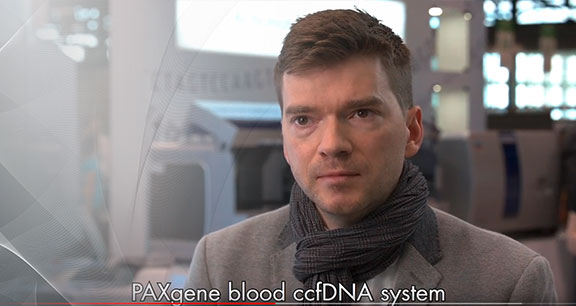

An important biomarker for non-invasive prenatal testing (NIPT) and liquid biopsy, circulating cell-free DNA (ccfDNA) is obtainable through a regular blood draw. ccfDNA from plasma has the ability to provide a breadth of information to researchers and clinicians.
Blood collection and stabilization for reliable downstream assay performance
Learn about the non-crosslinking stabilization chemistry in the PAXgene Blood ccfDNA Tube (CE-IVD) and how other tubes may impact analytical sensitivity in downstream reactions.
Understand the importance of preanalytical sample preparation/stabilization and how it may affect analytical sensitivity in downstream analysis:
Stabilization chemistry matters
Clinicians and researchers in the field of non-invasive prenatal testing analyze fetal DNA present among maternal ccfDNA from blood of a pregnant woman to determine the risk that the fetus will be born with certain genetic abnormalities.
Liquid biopsy is a minimally-invasive method of collecting a patient biofluid sample to test for biomarkers of disease. Liquid biopsy is commonly used for many applications in cancer research and diagnostics.
Click here to learn more about QIAGEN's manual and automated Sample to Insight workflows for liquid biopsy and cancer research applications.
PAXgene Blood ccfDNA Tube (CE-IVD) is for in vitro diagnostic use.

Meet our experts on upcoming events to discuss the possibilities how to optimize your preanalytical workflows

Watch our recent ccfDNA webinar by Dr. Daniel Grölz, Associate Director of R&D (PreAnalytiX) where he presents the integrated, standardized automated PAXgene workflow solution for medium-to-high-throughput ccfDNA from plasma.

Discover the variety of scientific publications in which the PAXgene Blood ccfDNA stabilization technology was used